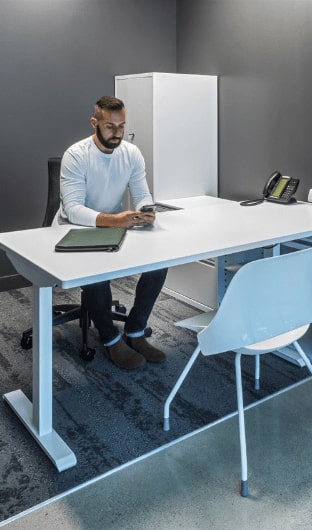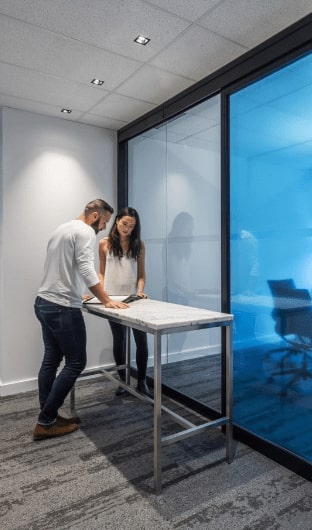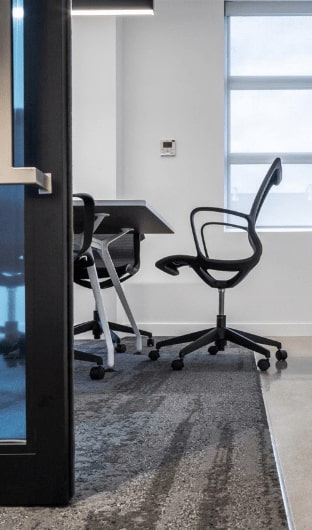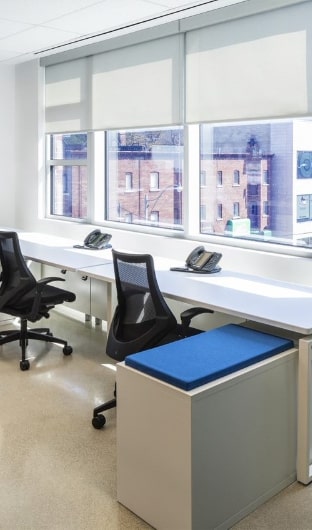
Effective Ways To Create An Inclusive Workplace
Creating a workspace that promotes diversity and inclusion is crucial in today’s modern workplace. Office design plays a significant role in enhancing employee well-being, productivity, and overall job satisfaction. An inclusive office space goes beyond physical accessibility; it considers the diverse needs of individuals to foster a positive work culture where everyone feels valued and supported. In this article, we will delve into key design considerations, including use of appropriate office furniture, and ways to achieve an inclusive workplace that meets the needs of all your employees.
Importance of Inclusive Office Design
Inclusive office design plays a crucial role in fostering creativity and innovation within the workplace. By creating an environment that embraces diversity, companies can unlock the full potential of their employees and cultivate groundbreaking ideas.
Promoting equal opportunities for all employees is a fundamental aspect of inclusive office design. Through thoughtful planning and consideration, companies can ensure that their workspaces cater to the needs of individuals with different abilities, backgrounds, and perspectives. This one-size-doesn’t-fit-all approach not only fosters a sense of belonging but also encourages collaboration among team members.
Enhancing employee satisfaction and retention is another significant benefit of inclusive work environments. When employees feel valued and supported by their surroundings, they are more likely to be engaged and motivated in their roles. Inclusive office design can contribute to higher levels of job satisfaction, leading to increased productivity and reduced turnover rates.
Meeting legal requirements and avoiding discrimination is a critical aspect of designing an inclusive office space. Companies must adhere to various regulations to ensure that their workplaces are accessible and accommodating for everyone. By incorporating inclusive design principles into their office spaces, businesses can create an environment that complies with legal obligations while promoting equality.
Key considerations for creating an inclusive workplace
In designing an inclusive office space, there are several key considerations that companies should keep in mind to foster a truly inclusive work environment. By incorporating these elements, organizations can create a workplace that promotes diversity and employee well-being:
- Incorporating accessible features: Designing an inclusive workplace starts with removing physical barriers. This includes incorporating features such as ramps, elevators, and wide doorways to ensure easy access for employees with mobility challenges.
- Providing flexible workstations: Recognizing that different individuals have varying working styles, offering flexible workstations is vital. This could include adjustable desks, standing workstations, and private pods for focused tasks. By accommodating diverse needs, employees can choose the environment that best suits their preferences and increase productivity.
- Ensuring proper lighting, acoustics, and ventilation: Creating a comfortable work environment involves considering factors like lighting, acoustics, and ventilation. Adequate lighting helps reduce eye strain and improves concentration while proper acoustics minimize distractions. Well-ventilated spaces contribute to overall employee well-being.
- Implementing ergonomic furniture: Ergonomic furniture plays a vital role in supporting diverse physical needs within the workforce. Providing chairs with adjustable height and lumbar support or standing desks can help prevent musculoskeletal issues and promote better posture among employees.
By addressing these key considerations when designing an inclusive office space, companies can cultivate a supportive work environment that values diversity and inclusion. Such initiatives not only enhance company culture but also contribute to employee retention by fostering a sense of belonging among workers from various backgrounds.
Remember, the importance of an inclusive workplace goes beyond physical aspects—it also encompasses mental well-being. Organizations should strive to create environments where employees feel supported in terms of their mental health as well.
Creating an inclusive office space requires ongoing commitment from employers to identify barriers faced by employees and implement measures to overcome them. By prioritizing inclusivity, companies can reap the benefits of a diverse workforce while fostering a positive work environment for all.
Role of office furniture in creating an inclusive workplace
Choosing the right office furniture plays a vital role in creating an inclusive workplace. By carefully selecting and incorporating ergonomic furniture, offices can ensure that their workspace caters to the diverse needs of employees.
- Choosing adjustable desks and chairs: Opting for adjustable work desks and chairs allows individuals with varying heights or physical abilities to find a comfortable working position. This accommodation promotes inclusivity by ensuring everyone can work at their preferred level.
- Providing comfortable seating options: It’s essential to offer comfortable seating options suitable for people with different body types or preferences. By providing a range of office chairs, such as those with lumbar support or cushioned seats, employees can choose what suits them best.
- Incorporating standing desks: Introducing standing desks into the office environment encourages movement and helps reduce sedentary behavior among employees. These desks allow individuals to switch between sitting and standing positions throughout the day, promoting better health and productivity.
- Diversifying furniture options: To create an inclusive workplace, it’s imperative to consider cultural preferences or religious practices when selecting furniture. Offering a diverse range of furniture options ensures that employees from various backgrounds feel respected and accommodated.
Embracing Diversity and Inclusion in Office Space Design
In conclusion, designing an inclusive office space is of paramount importance for fostering diversity and promoting a sense of belonging among your employees. By considering key factors such as accessibility, flexibility, and cultural representation, organizations can create a workplace that accommodates the diverse needs and preferences of their workforce. The role of office furniture should not be underestimated either, as it plays a significant part in enhancing inclusivity by providing ergonomic solutions and customizable options.
In order to ensure your office space is truly inclusive, consider conducting regular assessments to identify any areas for improvement. Seek feedback from employees about their experiences within the workspace and use that information to make necessary adjustments. Remember that inclusivity is an ongoing process that requires continuous effort.
Reach out to Harkel Office – a leading office furniture dealer in Ontario and find out how we can transform your office into an inclusive workplace that meets the unique needs of your organization and employees.





